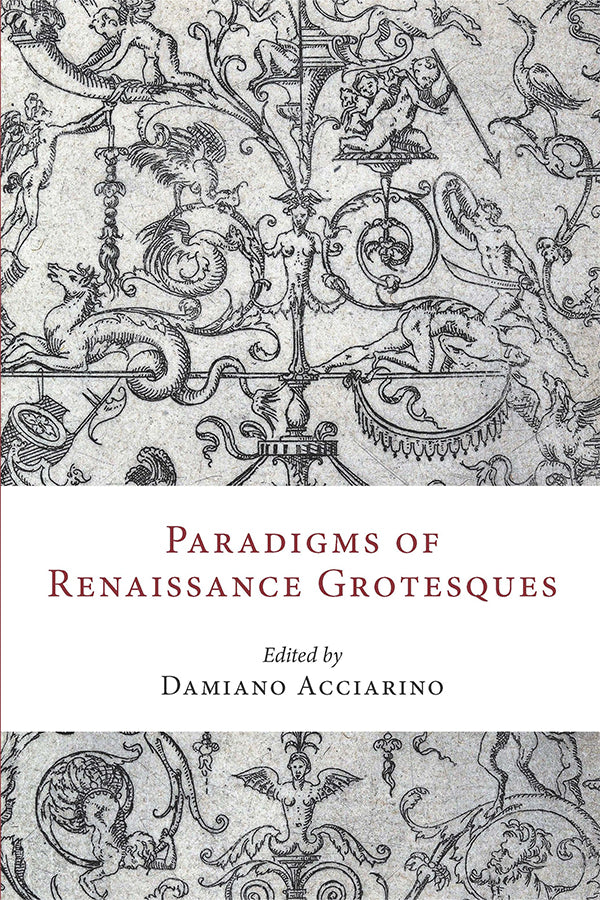Paradigms of Renaissance Grotesques
Edited by Damiano Acciarino - ES43
Overview
ISBN: 978-0-7727-2195-2 softcover, 978-0-7727-2193-8 hardcover
Published: 2019
Contents
1. Damiano Acciarino, Introduction, "Between Renaissance and Reformation: Grotesques and the Debate on Images"
Theoretical Perspectives
2. Alessandra Zamperini, "Grotesques and the Antique. Raphael’s Discovery of the Fourth Style"
3. Dorothea Scholl, "'Sense of Nonsense.' A Theology of Grotesques"
4. Philippe Morel, "Laughing with the Grotesques in the Renaissance"
5. Clare Lapraik, "Plato’s Stag Goats: Sophistic Heritage in Renaissance Grotesques"
6. Maria Fabricius Hansen, "Telling Time: Representations of Ruins in Grotesques"
7. Simon Godart, "Grotesque Poetics. Michel de Montaigne’s Use of Grotesques in De l’Amitié (I:28)"
8. Frances S. Connelly, "Unwinding the Arabesque: Grotesque Ornament and Modern Meaning"
Practical Applications
9. Kathryn Blair Moore, "The Logic of Grotesques in Renaissance Art: Marian Figuration at the Limits of Representation"
10. Barnaby Nygren, "Old Forms Grow in New Lands: Grotesque Decoration in the Open Chapel at San Luis Obispo (Tlalmanalco, Mexico)"
11. Marvin Lee Anderson, "Fighting the Thirty Years’ War on Two Fronts: Religious Intolerance and Militant Nationalism as Threats to Christ’s Presence in the World"
12. Patrizia Granziera, "Plants of the Gods and Weird Creatures: The Cryptic Language of Sixteenth-Century Convent Walls in Mexico"
13. Luke Morgan, "'Nocturnal Fowl Disorientated by Sunlight' Grottesche and Gardens in the Late Sixteenth Century"
14. Maria-Anna Aristova, "Other Bodies and Other Forms: Grotesque Departures in Seventeenth-Century Naples"
15. Veronica M. White, "Ridicolosa Rassomiglianza: The Art of Exaggeration in the Carracci’s Caricatures"
Appendix
Ulisse Aldrovandi. Five Letters on painting – Thomas DePasquale (trans.)
Pirro Ligorio. Three Letters on Grotesque Painting – John Garton (trans.)
Giambattista Bombelli. Three Letters on grotesques – Sylvia Gaspari (trans.)
Egnazio Danti. Letter to Camillo Paleotti – Sylvia Gaspari (trans.)
Federico Pendasio. Letter to Giovanni Francesco Arrivabene – Sylvia Gaspari (trans.)
Alfonso Chacón [?], Letter to Camillo Paleotti – Sylvia Gaspari (trans.)
Reviews
Seventeenth Century News, 78:3&4 (Fall 2020), pp. 95-102. Reviewed by Livia Stoenescu.
Couldn't load pickup availability


